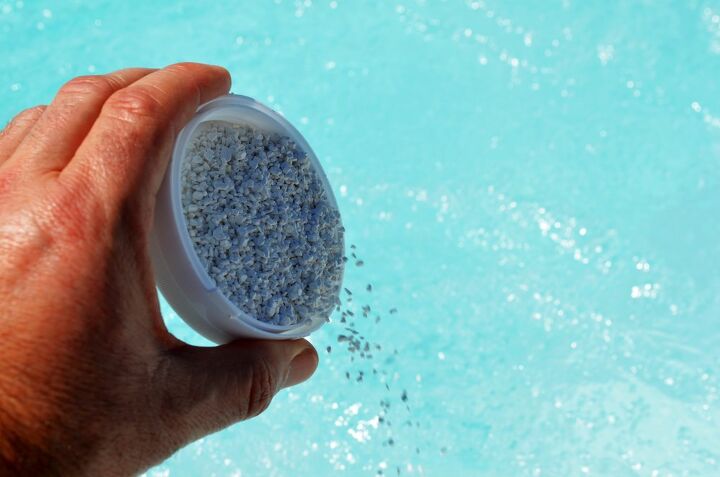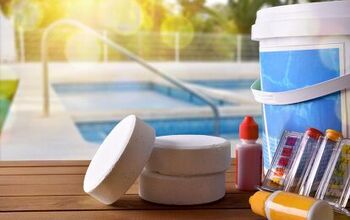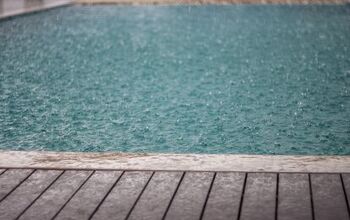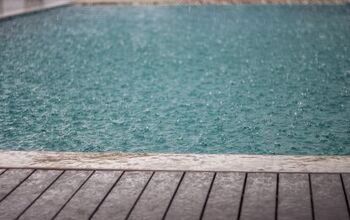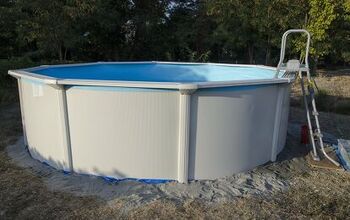Can You Put Too Much Shock In A Pool?

Swimming pools are a great way to cool down during the hot summer months. However, it’s not always easy to know when you should add a shock treatment and how much is too much. Can you put too much shock in a pool?
It’s both possible and dangerous to put too much shock in your swimming pool. When this happens, you will notice cloudy water and experience burning eyes and skin rashes if you take a dip. To counteract the excessive shock, add sodium thiosulfate to reduce the chlorine concentration, and wait 4 days before swimming.
Continue reading to find out if it’s possible to put too much shock in a pool and what happens when you do this. Additionally, we’ll cover how to counteract an over-shocked pool and determine the necessary amount of time to wait before swimming.
Do You a Need Pool, Spa, or Hot Tub Contractor?
Get free, zero-commitment quotes from pro contractors near you.

Is It Possible to Put Too Much Shock in a Pool?
Shock treatments contain a certain percentage of chlorine intended to kill bacteria in the water. If a pool has too little or no chlorine, unpleasant odors will arise from the release of sulfur compounds due to algae blooms or other growths.
It’s 100% possible to put too much shock in a pool. Even mild symptoms, like burning eyes and skin, indicate that excessively high chlorine levels are present. Other physical signs include cloudy water, foam in the pool (which can also be caused by too little salt if you have a saltwater pool), and reduced effectiveness of chlorine tablets.
Chemical burns to the eyes or skin should always be treated right away with copious amounts of water and medical attention.
There are four main types of pool shock:
- Sodium hypochlorite
- Calcium hypochlorite
- Sodium dichloro-s-triazinetrione
- Potassium monopersulfate
The most frequently used type of pool shock is calcium hypochlorite, which has a chlorine level of around 65% and acts as a bleaching agent to sanitize your pool.
It’s also the most accidentally overdone, which will cause hard calcium deposits to form, making the water appear cloudy.
What Happens When You Put Too Much Shock in a Pool?
Does using too much shock treatment cause long-term negative effects?
The purpose of shocking a pool is to make it safe for swimmers, so they don’t have to worry about catching an infection from bacteria. When you over-do it, you risk experiencing the following problems:
- Burning eyes
- Rashes and other skin conditions
- Irritation of the respiratory system
- Nausea and vomiting (if too much water is inhaled or ingested)
A pool’s pH level should be around 7.5 in order to be deemed safe for swimming. Too much shock will throw off the proper acidity of your pool.
Other physical problems with the pool that will occur when too much shock is used include:
- Cloudy water (caused by calcium hardness above 400 ppm)
- High cyanuric acid levels
- High pH levels
- Degradation of pool materials (like the lining, tile finish, and metal components)
Being able to identify these signs will allow you to avoid causing any further damage to your pool.
What to Do When You Over-Shock Your Pool
If you’ve overdone it and put too much shock in your pool, don’t panic just yet. There are a few ways that you can bring the chlorine levels back down to normal.
Add sodium thiosulfate or hydrogen peroxide to reduce the chlorine concentration in your pool. Then, lower the water’s pH levels back to normal by adding muriatic acid, if necessary.
Additionally, filter out all of that extra calcium hardness. You can do this by running the filter for a longer period of time or by using a chemical flocculant. This will cause the calcium deposits to clump together and sink to the bottom of the pool, which is easier for removal.
How Long Should You Wait to Swim After Over-Shocking Your Pool?
It can take a while for the excessive amounts of chlorine and extra chemicals to dissipate.
It’s difficult to pinpoint an exact time frame, and it depends primarily on your pool size and how much you used. Generally speaking, you should wait at least 4 days before swimming again and test the water’s pH and chlorine levels beforehand.
However, it could take even longer than that, depending on the extent of the damage. If you notice any physical wear after shocking your pool, get that repaired first.
Overall, a higher concentration of chemicals will require more time for all traces to disappear.
Related Questions
Is pool shock the same as chlorine?
Pool shock is just an extremely concentrated version of chlorine, meant to “shock” your pool into a sanitized state and fade away over time.Chlorine tablets are intended to maintain a clean pool by killing bacteria and keeping algae at bay.
How often should you shock your pool?
It really depends on your pool. If it’s an in-ground pool that experiences heavy use, you should shock it every 7 days to 2 weeks. Letting it go longer will throw off the normal chemical levels.If you aren’t using your pool as often (like in the wintertime), you should shock it once a month. You’ll need to take the cover off to do this and leave it that way for a couple of hours.
Do you need to shock a saltwater pool?
Yes, even saltwater water pools need to be shocked! Do so once a week during the high season and every month or so during colder times of the year.
Do You a Need Pool, Spa, or Hot Tub Contractor?
Get free, zero-commitment quotes from pro contractors near you.

In Summary
It’s possible to put too much shock in a pool, and when you do this, it can cause some serious problems.
Fortunately, there are ways to fix this issue if it occurs. If you notice any of the signs that indicate your pool may be over-shocked, start with the troubleshooting recommendations detailed above.
Wait at least 4 days before swimming again, and call in a professional if the situation doesn’t improve in that timeframe.

Emily is a copywriter with over five years of experience in crafting content for the home renovation and remodeling industry. She loves house projects, whether it be painting a room or tweaking small design elements to transform a space. Her favorite aesthetic is french modern because of its clean lines and airy feeling! When not writing, Emily loves to travel and check out architectural details all over the world.
More by Emily Carr



